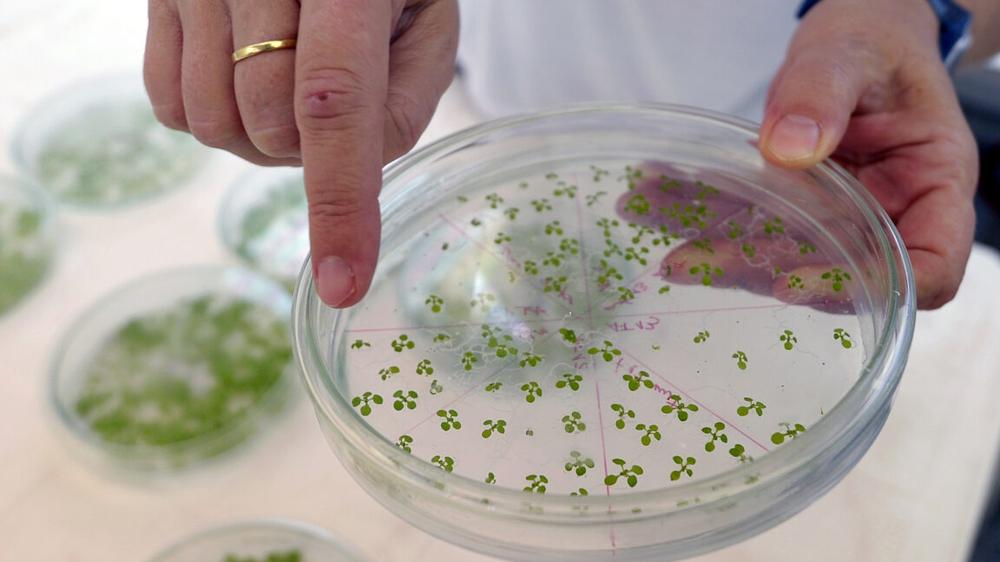Lots of people are excited about the idea of using plants to help us draw down some of the excess carbon dioxide we've been pumping into the atmosphere. It would be nice to think that we could reforest our way out of the mess we're creating, but recent studies have indicated there's simply not enough productive land for this to work out.
One alternative might be to get plants to take up carbon dioxide more efficiently. Unfortunately, the enzyme that incorporates carbon dioxide into photosynthesis, called RUBISCO, is remarkably inefficient. So, a team of researchers in Taiwan decided to try something new—literally. They put together a set of enzymes that added a new-to-nature biochemical cycle to plants that let it incorporate carbon far more efficiently. The resulting plants grew larger and incorporated more carbon.
Cycles and recycles
In the abstract, incorporating carbon dioxide from the atmosphere into the biochemistry of the cell seems simple—you just link up a few of the carbon atoms and you're off. But in reality, it's fiendishly complicated. Carbon dioxide is an extremely stable molecule, so incorporating it requires a very energetically favorable reaction. In the Calvin cycle of photosynthesis, that reaction involves linking the carbon dioxide as part of a reaction that breaks apart a modified five-carbon sugar, creating two three-carbon molecules. Some of those molecules get fed into the cell's metabolism, while others get built up into a five-carbon sugar again, restarting the cycle.
It works, but again, the central enzyme that incorporates the CO2 is inefficient. And, as the researchers behind the new work note in a paper describing it, the three carbon molecules it produces aren't a great match for all of the cell's metabolism. The lipids used to make fats and the cell membrane are built up two carbons at a time. For that to work, plant cells actually oxidize a carbon back off, releasing carbon dioxide, in order to create a two-carbon source for building lipids.
(For those of you who remember basic biochemistry, lipids are built using a molecule called acetyl Co-A, which has a two-carbon acetyl group attached to a larger molecule—the Co-A—that can easily be lopped off to combine the two carbons with other molecules.)
So, the team was interested in establishing something similar to the Calvin cycle, but capable of outputting a two-carbon molecule without re-emitting the carbon dioxide molecule that had just been captured. What they came up with is the malyl-CoA-glycerate cycle, which they fortunately abbreviated as the McG cycle so nobody would ever have to remember its real name. The reactions of the cycle (there are eight of them) are all catalyzed by existing enzymes, though those enzymes come from a number of different species, so they don't naturally occur together.
The McG cycle has a few very useful features. It spits out a two-carbon product at one of the steps, which can be directly used in the production of lipids. It also builds that molecule by incorporating carbon atoms at two different steps in the cycle, meaning a single cycle captures more carbon than gets taken up during the Calvin cycle in photosynthesis. (One of these is technically a bicarbonate molecule, which is produced when carbon dioxide dissolves in water.) Finally, there is a point in the McG cycle where it can exchange molecules with the Calvin cycle, allowing those two systems to interact and draw off any excess materials produced by either of them.
Nice, but does it work?
Back in 2018, the same lab tested the McG cycle in photosynthetic bacteria. In their new paper, they describe inserting all the genes into a plant cell and seeing how the plant responded. For testing purposes they used a small weed named Arabidopsis that's a mainstay of plant research.
And, well, it worked remarkably well. The plants carrying all the genes for the McG cycle weighed two to three times as much as control plants that only had some of the genes. They had more leaves, the leaves themselves were larger, and the plants produced more seeds. In a variety of growing conditions, the plants with an intact McG cycle incorporated more carbon, and they did so without increasing their water uptake.
Having a two-carbon output also worked as expected. By feeding the plants radioactive bicarbonate, they were able to trace the carbon showing up in the expected molecules. And imaging confirmed that the plants were making so many lipids that their cells formed internal pockets containing nothing but fatty materials. Triglyceride levels increased by factors of 100 or more.
So, by a variety of measures, the plants actually did better with an extra pathway for fixing carbon. There are a number of cautions, though. For starters, it's not clear whether what we're learning using a small weed will also apply to larger plants or crops, or really anything much beyond Arabidopsis at the moment. It could be that having excess globs of fat floating around the cell has consequences for something like a tree. Plants grown in a lab also tend to be provided with a nutrient-rich soil, and it's not clear whether all of this would apply to a range of real-world conditions.
Finally, we can't say whether all the excess carbon these plants are sucking in from the atmosphere would end up being sequestered in any useful sense. It could be that all the fat would just get oxidized as soon as the plant dies. That said, there are a lot of approaches to making biofuel that rely on modifying the fats found in plants or algae. It's possible that this can eventually help make biofuels efficient so they actually have a net positive effect on the climate.
Regardless of practical impacts, however, it's pretty amazing that we've now reached the point where we can fundamentally rewire a bit of metabolism that has been in operation for billions of years without completely messing up plants.
Science, 2025. DOI: 10.1126/science.adp3528 (About DOIs).

 Nintendo Direct reveals Minecraft and Animal Crossing style Pokemon Pokopia game
Nintendo Direct reveals Minecraft and Animal Crossing style Pokemon Pokopia game